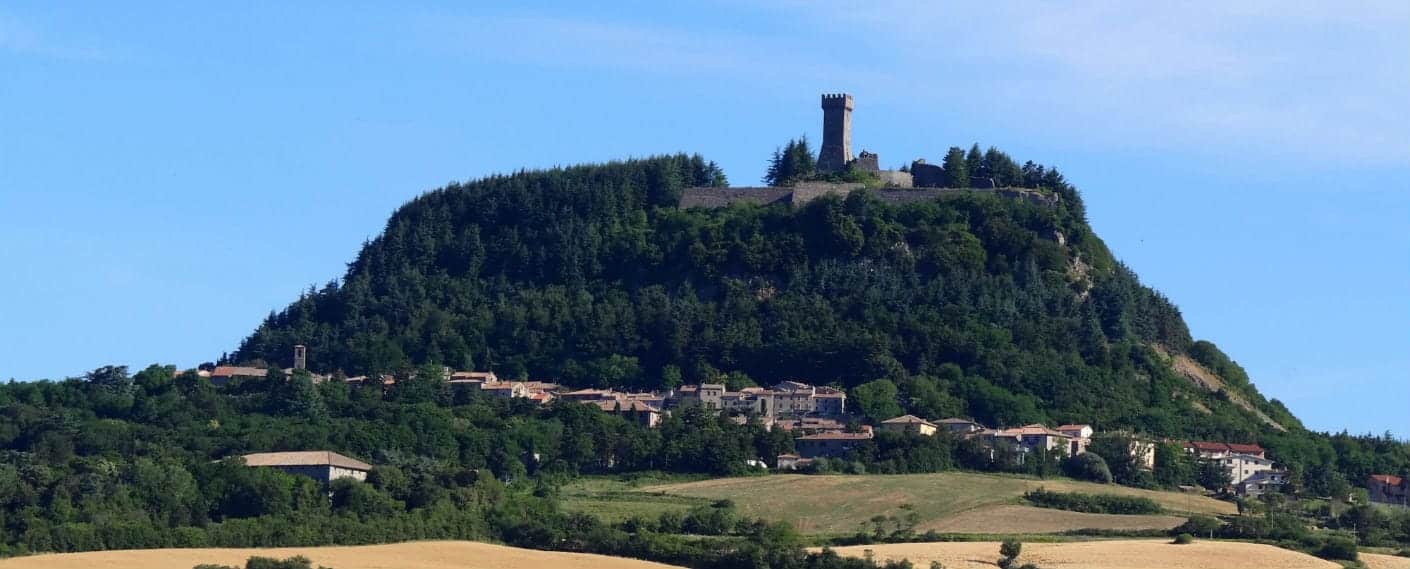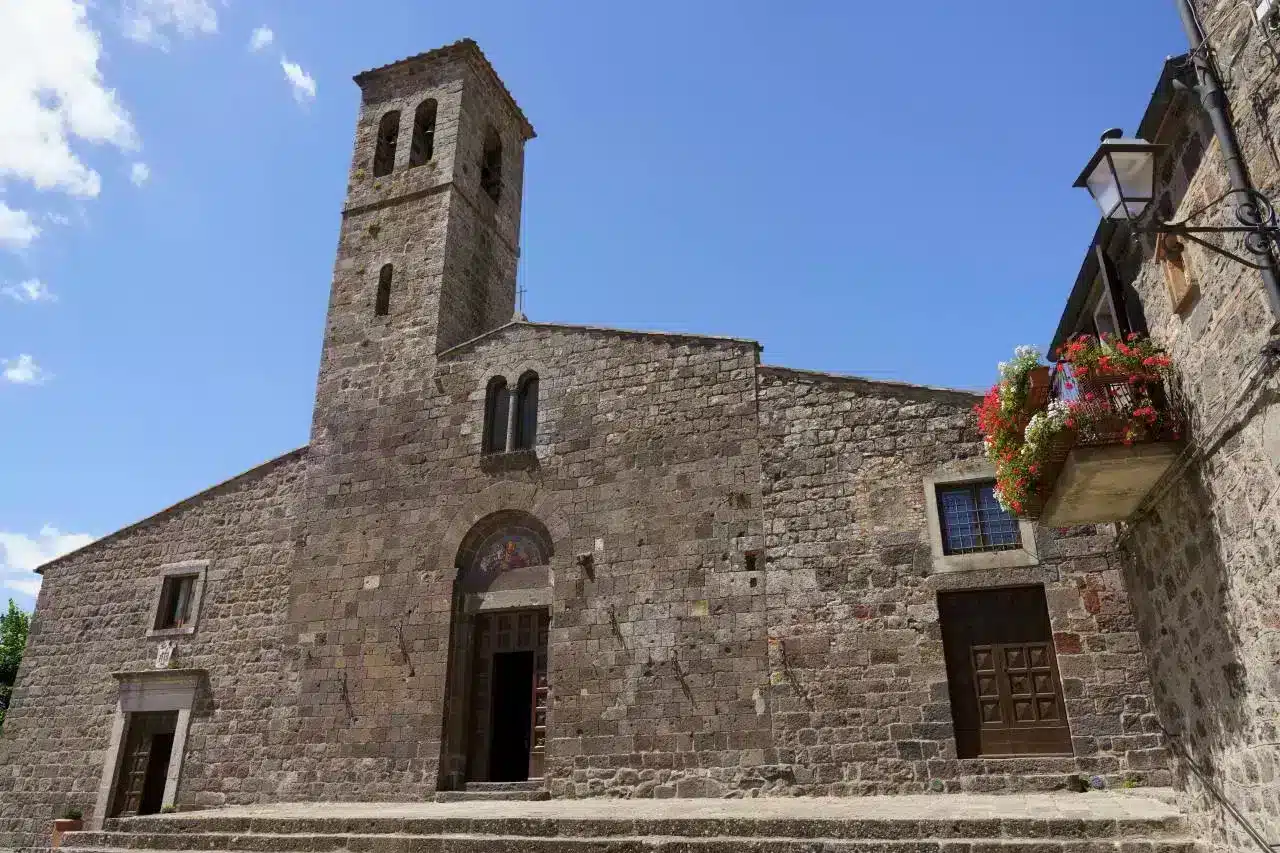The Church of St. Peter the Apostle in Radicofani is one of the most significant buildings in the village, not only for its historical and religious value, but also for the beauty of the works of art it preserves inside. Dating back to the first half of the 13th century, the church was consecrated in 1224 and dedicated to St. Peter the Apostle, one of the main saints of Christianity and the first Pope of the Roman Catholic Church. Originally a parish church, the Church of St. Peter played a central role in the Radicofani area, within the diocese of Pienza, and was an important landmark for the local community.
The building has a sober stone facade, typical of the Romanesque style, and is located at the end of a flight of steps that accentuates its grandeur. The main portal, dating back to the 13th century, is surmounted by a mullioned window, a double-hung window that lends a Gothic touch to the facade. The church is flanked by significant buildings: on the left side is the Church of Santa Maria Assunta, while on the right is the Oratory of Corpus Christi. Opposite the church, the Church of St. Agatha can be seen, creating a small complex of places of worship that characterize the surrounding square.
The interior of the church has a single nave, with a wooden truss roof that lends a sense of lightness and spaciousness. The basilica plan is simple yet majestic, with an atmosphere that invites reflection. Inside, the church houses some of the finest art in the area, particularly glazed ceramics from the Della Robbia school, famous for their art in glazed terracotta. Among the best-known masterpieces are the Crucifixion with Mary Magdalene, a work that enchants for its delicacy and the expressive power of the faces, and the Madonna and Child Enthroned, another famous terracotta depicting the Virgin and Child surrounded by Saints Michael and Catherine.
Other important examples of the Della Robbia school are found in the church, such as the Madonna with St. Anthony Abbot and Job, which testify to the mastery of Andrea and his pupils. But art is not limited to ceramics: the interior of the church also houses a number of wooden statues in the Michelangelo style, further enriching the artistic heritage of the place. Prominent among them is a Madonna and Child, attributed to Francesco di Valdambrino, a sculpture representing the sweetness and tenderness of the bond between mother and child.
Next to the church, in Maccione’s garden, is a statue paying tribute to Ghino di Tacco, the gentleman bandit who gave Radicofani’s history a legendary touch. Ghino di Tacco, known for his outlaw exploits that led him to take refuge in the Rocca di Radicofani, was a romantic and fascinating character, often compared to the Robin Hood of the Val d’Orcia, and the statue in the garden symbolizes the unbreakable link between local history and the figure of the bandit.
Overall, the Church of St. Peter the Apostle is a jewel of Romanesque architecture that preserves a rich artistic heritage, making Radicofani a must-see destination for lovers of history, art and spirituality. The church is not only a place of worship, but also a living testimony to the culture and traditions that have characterized this fascinating corner of Tuscany for centuries.



